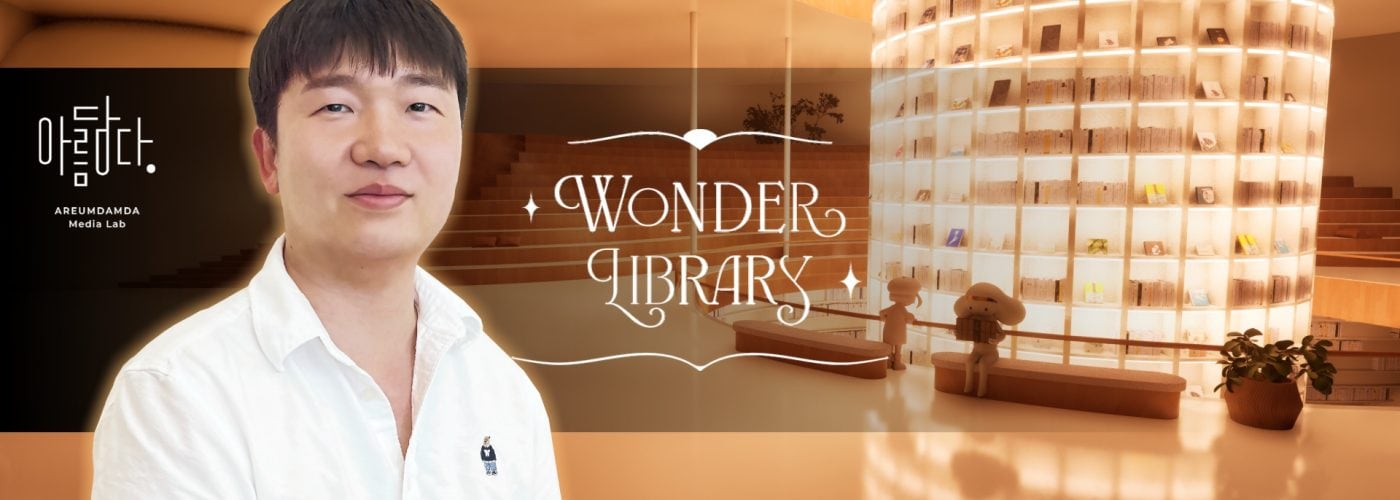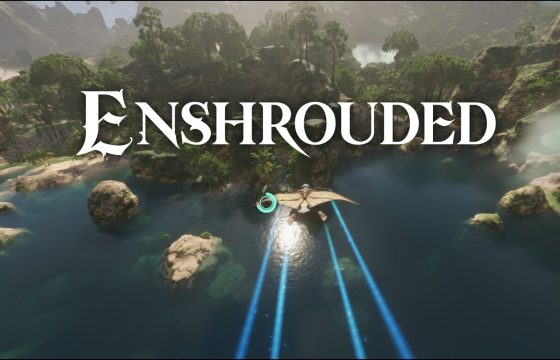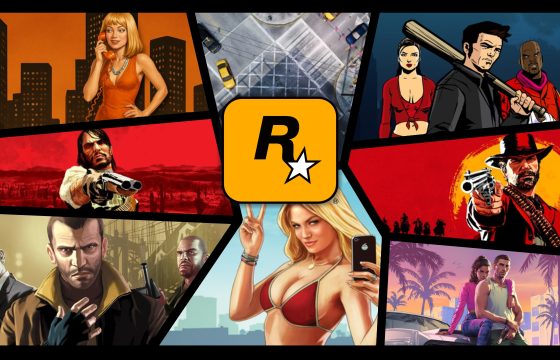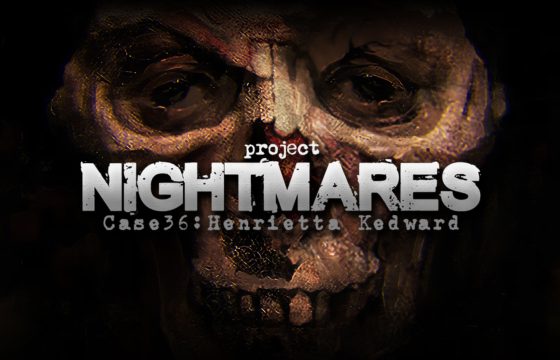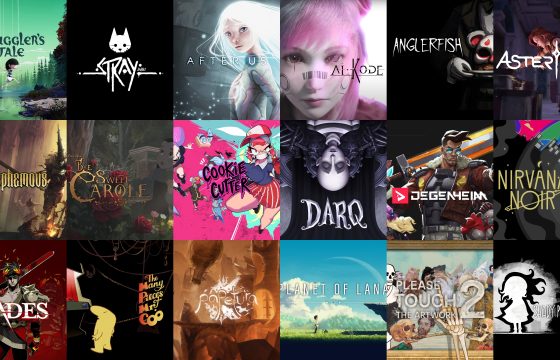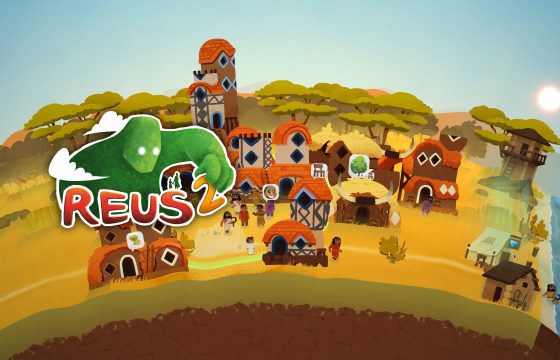Could this be the new frontier of digital storytelling? Is building open, inclusive spaces the pathway to creating a more immersive, distinctive, and interactive digital reading experience? We speak with Bae JeongHoon, CEO of Areumdamda Media Lab, one of the most internationally committed pioneers bringing this concept to life worldwide.

We spent quite some time reflecting on how best to introduce the journey we’re about to embark on with you today. We considered every angle, weighed every possible opening, searching for the perfect words to set the scene. But the truth is, sometimes a vision speaks so clearly and powerfully for itself that elaborate introductions feel unnecessary. All that remains is to listen—and to be guided.
From the moment we first laid eyes on Wonder Library, and from our initial exchange with the brilliant minds at Areumdamda Media Lab, it was clear we were witnessing something rare:—an artistic and conceptual vision that felt both bold and necessary. This art-focused fusion content studio is not merely crafting a game; it is charting a new narrative course—one where video games evolve beyond mere entertainment or escapism to become instruments of learning, personal development, and deep emotional engagement.
Wonder Library reimagines the digital reading experience by transforming it into a deeply immersive, highly personal, and interactive journey. In this uniquely crafted space, reading is no longer passive—it becomes lived, felt, and profoundly human. The player is invited to explore a dreamlike, book-based ecosystem where literature breathes, where stories unfold in real-time through exploration, interaction, and emotional resonance. Here, one doesn’t just read a book—they inhabit its world. It’s a space of reflection, healing, and quiet wonder. A sanctuary for the curious soul.
These are the themes we explored in our conversation with Bae JeongHoon, CEO of Areumdamda Media Lab and one of the key minds behind Wonder Library. In this in-depth interview, we uncover the origins of the project, the philosophy guiding it, and the transformative potential it carries—not just for the future of digital storytelling, but for its redefinition in the here and now.
So, without further ado, join us in welcoming our guest—and step with us into a world where books, games, and imagination converge. Happy reading.
The Interview
Hello Mr. Bae, and thank you for accepting our invitation and joining us today. To begin, we’d like to ask a question that, although seemingly introductory, serves as a vital starting point for understanding the creative, artistic, and professional journey that has brought you and your studio to this important juncture. Could you share with us the true inception of Areumdamda Media Lab? What was the initial spark that set everything in motion, and what are the core principles that shape your creative vision?
Mr. Bae: As an ordinary game company employee, I often felt a deep personal thirst. I wanted to develop the medium of games, which has the power to combine interaction, art, and storytelling, in a more creative direction. Of course, I fully understand that accessible and standardized games naturally have broader mass appeal. However, even within similar commercial frameworks, picture books have been evolving in relatively freer directions. They take the form of books while also being multidimensional or overflowing with imagination, transcending conventional storytelling. It’s difficult to explain every detail here, but picture books often yield outcomes that surpass common expectations while still remaining accessible to the public. We saw a natural connection between this and games.
The visual artistry, emotional narratives, and the ability to “directly” interact with stories presented on pages bear many similarities to games. However, our journey didn’t begin simply by converting one medium into another. In fact, most people tend to doubt whether such a transformation is even possible. This is where our unique creativity comes into play, and it’s where the value of Areumdamda begins. Developing creative picture book stories into a new form of art media—a game—is one of the most enjoyable aspects of what we do. By blending the emotional resonance of picture books with Areumdamda’s reinterpretations, we aim to create fresh content that reaches both the gaming industry and larger markets.
This is also why there are plenty of examples, like Jumanji, where picture books have served as the foundation for films or games. Our ultimate goal is to encapsulate all these transformative processes into a single platform—a game.
Finally, what I’ve described aligns with what I personally value in life: it’s something meaningful, something I excel at, and something that contributes to society. Bringing all of this into harmony is the reason why I embarked on this journey.


Projects are shaped by ideas, visions, and individuals—often highly diverse, yet without their seamless integration, they would remain mere concepts and never evolve into something tangible. We imagine this has been the case with your studio as well: a group of ambitious and talented individuals, each with their unique backgrounds, experiences, and perspectives, yet bound by a singular, unifying goal—to create something distinctive and collective, embodying a piece of each creator’s individual vision. Could you elaborate on the core of your mission, the primary challenges you’ve faced along the way, and how you’ve successfully integrated such a wide range of perspectives into a cohesive and unified vision?
Mr. Bae: We could describe ourselves as a community of people who love both picture books and games. Naturally, there were challenges in harmonizing these two worlds. The process of creating a game is fundamentally different from that of crafting picture books or working in libraries and publishing. However, we saw this dissonance as an integral part of creating a new type of game that had never existed before. This was particularly evident in the planning stage—those with experience in picture books brought fresh perspectives to how games could be envisioned, while those focused on games had to develop a deep understanding of picture books.
From the perspective of integration, we believe it’s essential not to neglect either side, even if it feels ambitious. It was a journey of blending gameplay, picture books, libraries, and innovative interactions. While incorporating conventional game design methodologies, we constantly questioned “why” and strived to break away from traditional planning norms.
Additionally, we made significant efforts to break free from the conventions of typical game companies. Ironically, there were times when the answers lay within familiar game systems. Yet, no time was wasted. Every step helped us gain a deeper understanding, ultimately paving the way for the next stage of development.
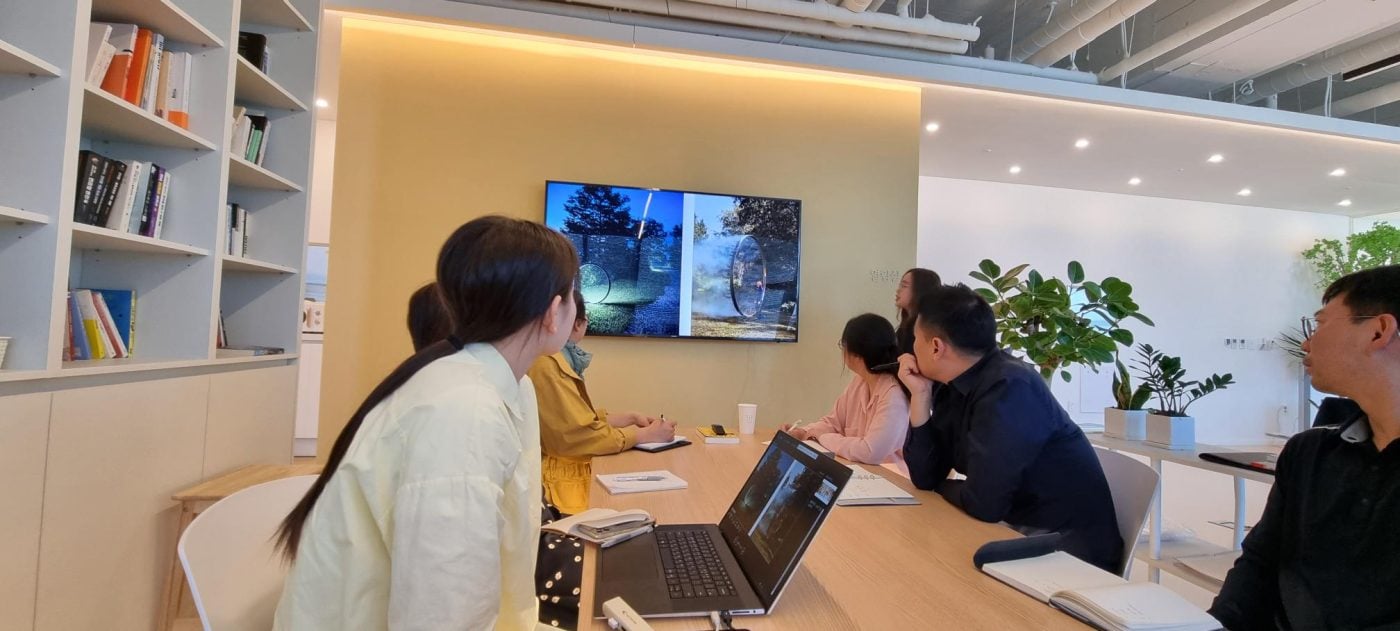
On November 19, 2021, Areumdamda Media Lab was founded—your forward-thinking, art-centered fusion arts content development company. At the heart of your artistic mission lies the creation of a next-generation 3D global publishing platform, based on picture books and publishing systems, while also pursuing research and projects that explore art convergence and future business opportunities. Could you provide further insight into the core concept of this platform, its defining features, and what inspired you to pursue such a unique and pioneering path within the artistic field?
Mr. Bae: Beyond our strategic approach, it’s clear that digital games, as we currently enjoy them, will not remain confined to their present form. Just as games have historically played an educational role and existed alongside humanity in their most primal forms, we are now witnessing how digital technology is enabling them to expand into every industry. While this may be the logical starting point for a business perspective, the more emotional aspect stems from our deep love for books, picture books, and artworks. In truth, that emotional connection is the most significant reason for our work. For us, books and digital books represent a primal form of content that we are deeply attached to. While their traditional forms are wonderful, the changing times inevitably demand transformation. If transformation is unavoidable, we believe that combining our pursuit of artistry with game technology can create an exciting and innovative book platform. We understand this is a process that takes time, but it is also something that someone has to begin.
Currently, the library-focused version of Wonder Library (Library for All) is already being serviced in Korea, particularly for public institutions. Through this tangible service, we are providing opportunities and income to publishers, authors, and various artists, even at times incurring losses ourselves. However, we see this as our mission. While financial profitability is important, we believe it’s even more critical to take a long-term view.
The greatest joy for us lies in enabling picture books and diverse works of art, which might otherwise remain confined to a single location, to reach audiences on the other side of the globe. Through this, we embrace the role of a complex artistic library that faithfully conveys or even expands the artist’s intent, thereby broadening the reach and impact of art.
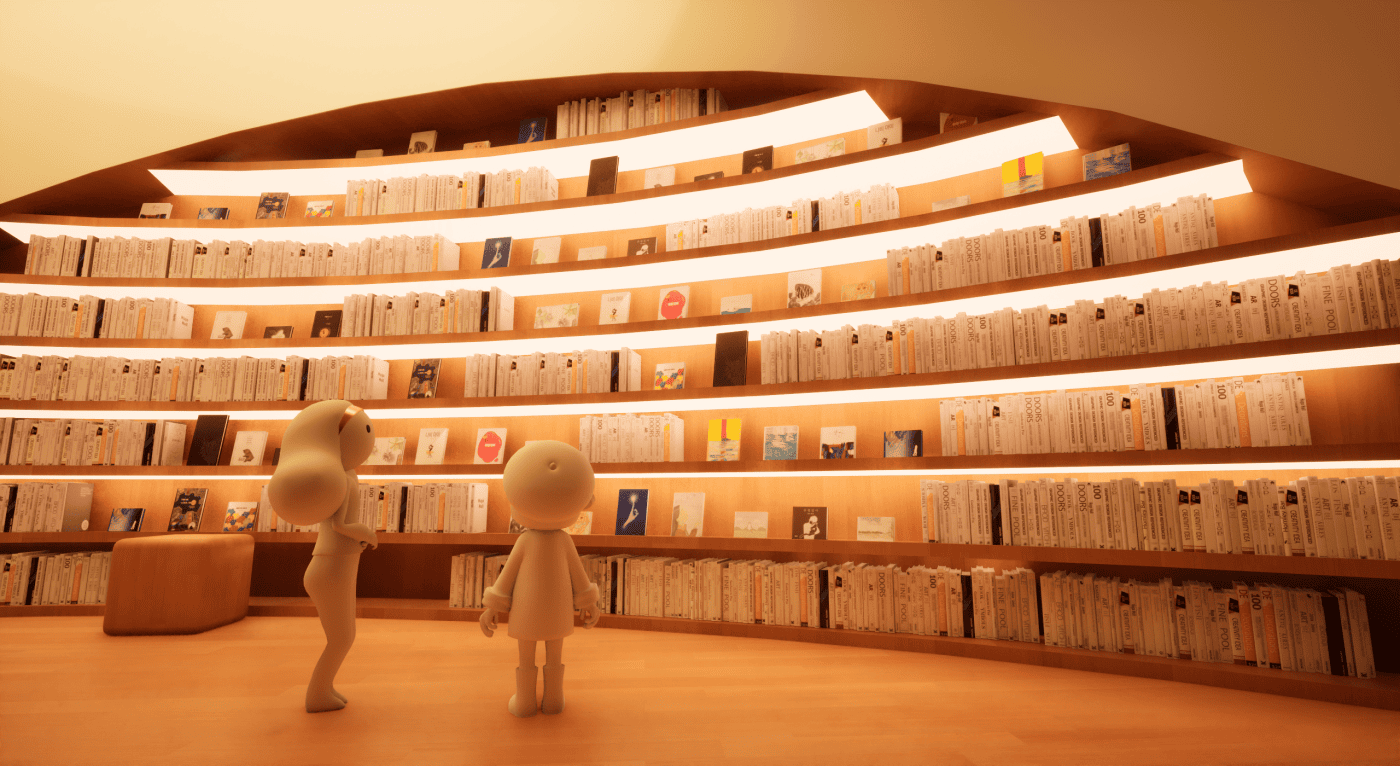
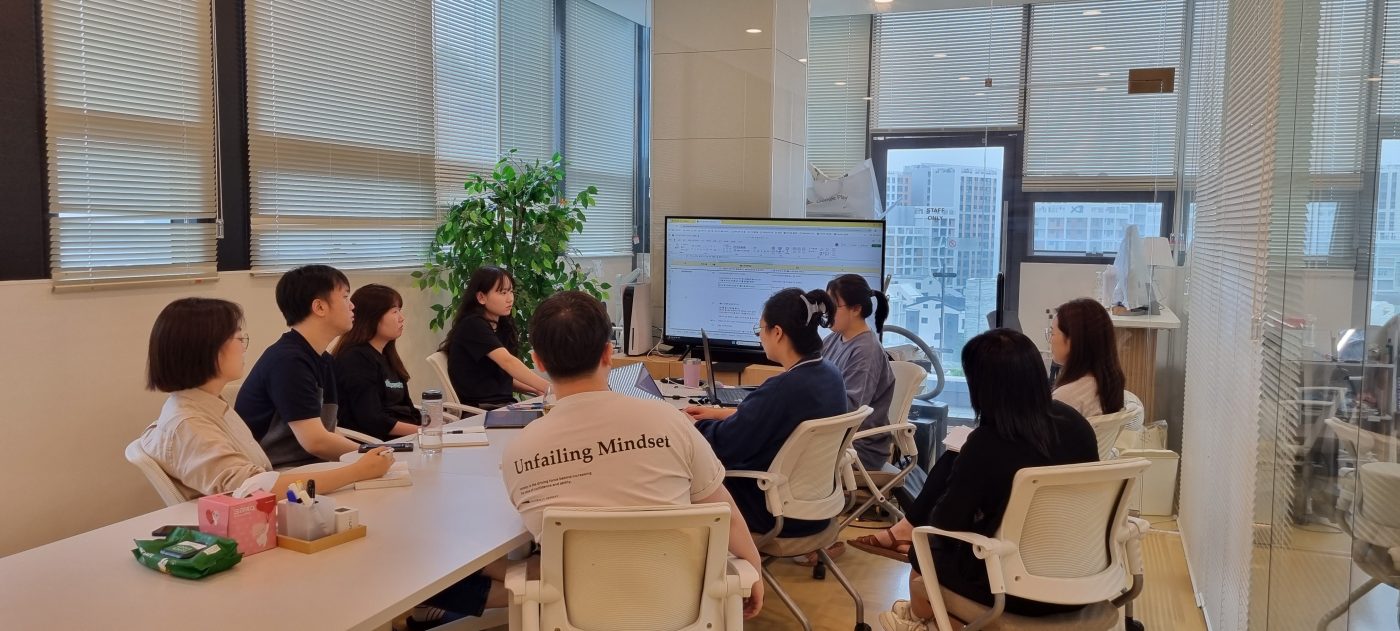
On June 14, 2023, following years of dedication, sacrifice, and an extraordinary amount of work, you officially launched the metaverse-based virtual picture book library, “Library for All,” at the Seoul International Book Fair. This groundbreaking next-generation publishing platform, designed primarily for public institutions, seeks to redefine the digital publishing and distribution landscape. By offering a futuristic alternative to traditional digital books, it aspires to set a new standard for the digital reading experience. Could you provide insight into the key features that define the “Library for All” experience and highlight the platform’s most distinctive strengths that set it apart from the existing digital reading models?
Mr. Bae: We see ourselves positioned somewhere between traditional books and modern digital books. While this aligns with our market focus, it’s also because we understand the strengths and weaknesses of both formats. We don’t view books as mere containers of text or information but as unique, tangible pieces of visual art. Our efforts center on capturing and conveying the analog and physical charm of books—even aspiring to evoke the scent of paper.
At the same time, we incorporate the advantages of digital books, ensuring accessibility from anywhere in the world. In this sense, we dream of a library that can exist wherever there’s a monitor or device. Rather than being just a digital bookshelf, we aim to function as a true virtual library. Like an online game, we hope to create moments where everyone can be connected through this library.
Imagine a library emerging from a space as small as 2 meters by 2 meters. This drastically reduces costs and opens possibilities for countless locations around the globe where such solutions are desperately needed.
Reading has become an increasingly rare activity, and this trend is not limited to younger generations—it spans all age groups, from youth to adults and seniors. Numerous studies highlight a troubling decline in book engagement, a trend that continues to grow, with even eBooks failing to provide a substantial solution. In light of this, how does Areumdamda’s innovative 3D publishing system present itself as a viable alternative to traditional eBooks? And what role do you foresee it playing in shaping the future of publishing?
Mr. Bae: Whether we like it or not, this shift aligns with broader changes in our era. Our publishing platform is adapting to this transformation more quickly than most. It’s true that reading as an activity has declined and now feels like a small niche among today’s many hobbies. However, even as visual content dominates, many people still recognize the irreplaceable importance of text and the cognitive processes involved in reading. These are not things we can afford to lose.
Even in an age where digital screens surround us, I believe books and text will find their place within that space. Some may consider this effort outdated, but we believe it will bear fruit. Imagine a future where, amidst enjoying games and other content in virtual environments, people still take the time to read a book. We see ourselves as the ones systematizing and safeguarding that possibility. We believe our role is to help physical publishing and digital books anchor themselves more firmly in this new era.
Most importantly, books within virtual spaces or games have the potential to unify all facets of the publishing ecosystem—from production to distribution, marketing, and communication. Just as online games provide a global experience, so too can publishing transcend language barriers and borders. Games have long been globalized, and with advancements in automatic translation, the infrastructure is becoming increasingly robust. These trends enable the creation of a unified space where publishing, distribution, marketing, and communication flow seamlessly. In simpler terms, it’s the convergence of online gaming and publishing.
We’re striving to shape this future, though we’re still in the early stages of the journey.
“Library for All” is, in our view, an exceptionally innovative and ingenious project that reimagines the concept of books and reading, creating a space where boundaries are dissolved—an open, personalized, customizable, and interpretable environment where books take center stage. However, our question is: what unique value does this provide in comparison to traditional reading? What does it offer us that traditional printed books cannot? What forms of interaction and immersion can we experience while reading a book within this space that would be impossible with a physical book?
Mr. Bae: I believe we’ve touched on similar ideas earlier, but what I’d like to emphasize here is this: the most important aspect is being able to read a book and, in that very moment, directly experience its pivotal moments. Beyond simply experiencing, you can also interact with the world of the book.
It’s a game, yet it’s not just a game. In truth, it’s a form of content that is still difficult to define. But its name doesn’t really matter. Reading a book, immersing yourself in its world, and interacting with it—just that alone is something truly extraordinary.

Before we delve into the heart of Wonder Library, we’d like to start with a question that, though seemingly obvious and one to which you’ve hinted at in your Kickstarter campaign, remains crucial and forms the foundation of our understanding of the project: What was the inspiration behind the creation of Wonder Library? Is it a natural progression toward a new form of art and entertainment, evolving from “Library for All,” or does it represent, in a sense, a more contained, smaller-scale dimension within the broader “Library for All” concept? Or perhaps, while sharing certain similarities, does it occupy an entirely separate and distinct space from “Library for All”?
Mr. Bae: It is undoubtedly a network and a shared universe. By creating a virtual space, we aim for all of these efforts to transcend being merely a platform and instead evolve into a cohesive universe. This is quite similar to the concept of a shared world often found in games. For us, this universe represents a cosmos for artists and conveys the belief that everyone harbors an inherent artistic desire.
Initially, Wonder Library—with its stronger emphasis on gameplay—was planned to be developed first. However, due to the specific needs of Korean public institutions, Library for All took precedence. During that time, Wonder Library was able to accumulate data for the future through Library for All. This has proven to be a critical factor since Areumdamda’s ultimate goal is to create a platform and project that spans a long journey.
This duality is significant in terms of user engagement and data collection because the product isn’t just for traditional gamers—it’s also for readers and the general public.
Building on our discussion of the inspirations, the next logical question is: What inspired you to take this specific direction with the concept of Wonder Library? What emotions, ideas, or experiences most influenced the creative process? As players immerse themselves in the experience, what kinds of feelings or connections do you hope they’ll encounter? Is the primary goal to help them rediscover the joy of reading by offering a sanctuary where they can spend time for themselves, or does this experience serve more as a stepping stone to something larger?
Mr. Bae: At its core, the idea began with a question: Can games not only offer creative forms of interaction but also contribute to greater social meaning? In other words, could games be recognized as something more than what they are currently perceived to be? This fundamental question, often sparked by playing conventional games, made us want to explore such efforts through the things we love—art, healing, overcoming depression, and books.
Through the shared process of play and interaction, we see our role as guiding players toward discovering a better version of themselves. While the joy of reading is a significant part of this experience, it remains just one element within the larger journey. Ultimately, we envision this experience as a metaphorical walk with the player—a way of expressing that, despite the challenges, life is worth living.
In this sense, while games can involve wielding a shotgun, they also have the greatness to shift the course of a person’s life. That’s the kind of impact we hope to achieve with Wonder Library.

Wonder Library takes players on a seven-day journey of self-discovery on Artist Planet, where managing a library and engaging with its visitors provide a soothing balm for a weary heart. The narrative unfolds through a dual plot, weaving together two stories—one set in the imaginative realm of Artist Planet, and the other grounded in the stark reality of Earth. Could you elaborate on how this dual narrative is structured? Furthermore, how do these two contrasting worlds, each with its unique narrative threads, ultimately converge into a cohesive and immersive experience?
Mr. Bae: The dual narrative explores two interconnected worlds: the ordinary life on Earth, with its universal experiences of growth and inevitable pain, and Artist Planet, a place where those pains and the journey toward healing are visualized. We’ve carefully considered how to depict this without being overly direct or excessively metaphorical. After all, we believe wounds are something you face, but with a certain degree of distance—just enough to process and heal. This balance is what we’ve expressed through the beauty of Artist Planet.
It may sound like a cliché, but we sometimes think that deep emotional wounds can make amnesia seem like a relief. In Wonder Library, players begin in such a state, gradually confronting their emotions step by step. Through this, we aim to create an experience where the process of healing unfolds visually, psychologically, and interactively—like climbing a gentle staircase toward recovery. While this may not be easily explained in words, we believe an interactive game can bring it to life.
This, we think, is the true power of games: their ability to create immersive, transformative experiences that help players navigate complex emotional landscapes.
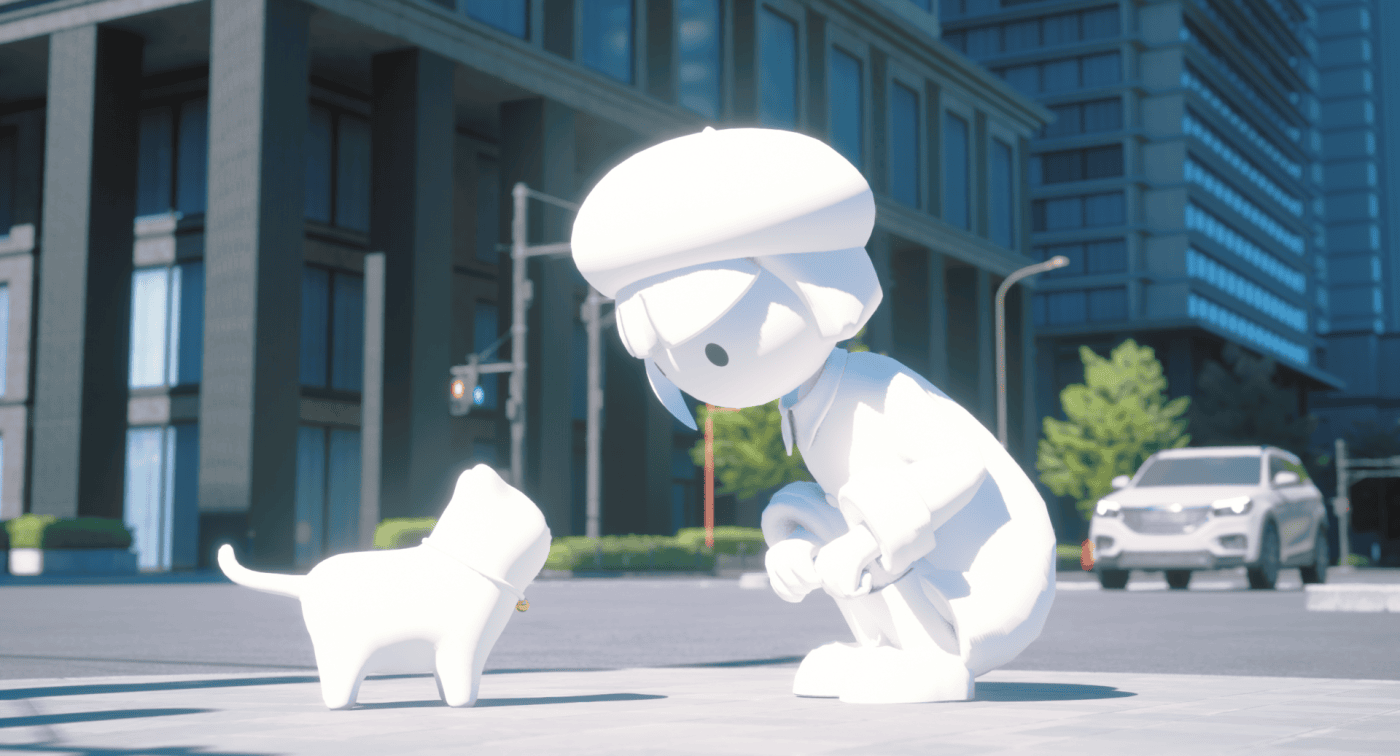
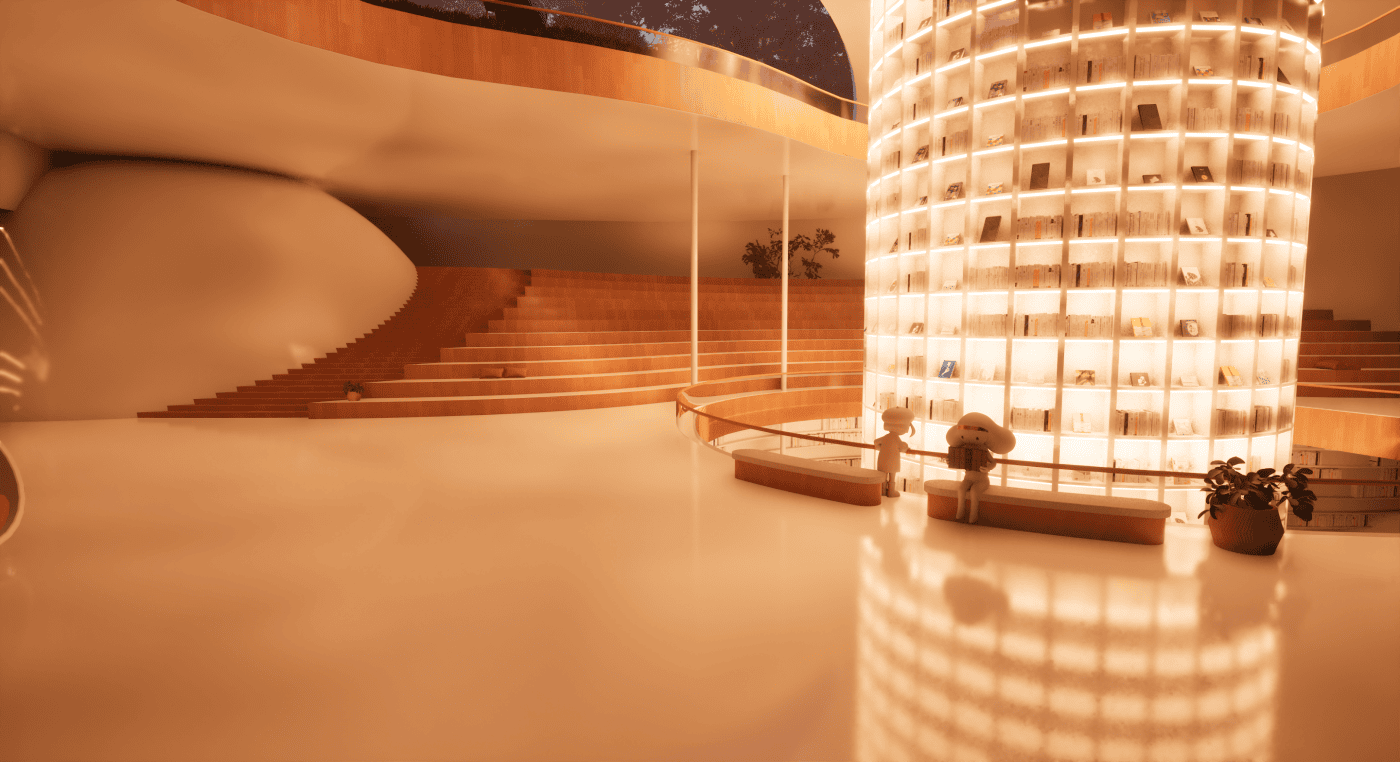
One of the most captivating and distinctive features of Wonder Library is its remarkable collection of over 100 books, each offering a unique narrative. These books promise to deliver a profound, artistic experience that deepens the emotional resonance of the game. This naturally raises a few key questions: How will these books be integrated within the game world? What will the catalog comprise, and how can players go about collecting them all? Perhaps most intriguingly, will the interaction with each book be limited to reading and consultation, or will players have the chance to step into their pages and fully immerse themselves in the stories they hold?
Mr. Bae: Picture books are designed to touch emotions in adults while also offering children intuitive values or lessons. While the selection and curation of such books inevitably involve some degree of subjectivity, we prioritize books that hold meaning across generations. Players may find lasting value in curating and collecting these books, but we envision them not as permanent possessions but as fleeting encounters—like travelers passing through the library.
In this sense, books will appear in the library for a limited time, tied to specific moments or seasons. If you miss a particular book during that time, it may not return, emphasizing the significance of each encounter. It’s a unique structure that we hope will make every interaction with the books more precious, creating a sense of timely and irreplaceable connection.
We believe that both aspects of books—meeting them as they are and bringing their worlds to life—are equally important. On one hand, simply reading and experiencing a book allows the reader to take on the role of the creator, imagining and interpreting its world. On the other hand, we strive to materialize the author’s vision and bring their imaginative realm to life in our unique way.
The convergence of these two dimensions—reading and interacting—within a single virtual space is the essence of the library we dream of creating.
The stories in Wonder Library appear to be rich with layers of meaning that extend beyond the surface. How is this complexity visually conveyed, perhaps through graphic metaphors or stylistic contrasts?
Mr. Bae: I think this question calls for a slightly different answer. The key themes we focus on in Wonder Library are wounds and memories. These two are inherently paradoxical—both mutually exclusive and complementary at the same time. Paradoxically, humans need both. However, approaching them requires a slow and gentle process, like softly caressing something fragile. Creating and delivering that process is a challenge we’ve undertaken, one we approach by reflecting on our own experiences. After all, nothing resonates as universally as personal experience.
It’s difficult to precisely explain how this is visually represented or translated into interaction, as these elements are neither immediately apparent nor centralized—they’re scattered and subtle. However, these fragments are interwoven with elements of emotional healing education, psychological counseling, and the solace derived from artistic expression and research.
We don’t believe there’s a definitive answer to this challenge. Yet, we also don’t believe it’s impossible to find meaningful methods. All of our work is part of a shared journey to discover those methods. And, since we are dealing with emotions and the human heart, we approach this with a sense of reverence and sincerity throughout the development process. That’s about as much as I can share for now.
Wonder Library appears to seek to place illustrated books in a new and innovative context. What is the team’s vision for how video games can contribute to the evolution of visual and interactive storytelling?
Mr. Bae: Great storytelling combined with visually compelling video games is the ultimate pairing. Our dream is for the creations we make to ultimately transcend being confined to a single category. Whether it’s a game, a film, or a book, we envision a future where people no longer focus on defining the medium but instead simply connect emotionally and feel deeply moved by the experience.
Currently, we call this medium a “video game.” However, the true success of video games will be the day they are no longer referred to solely by that term. That will mark their true evolution, and we believe we are contributing to bringing about that day. In this sense, the integrative and boundary-defying work we are doing feels only natural.
The gameplay experience in Wonder Library revolves around six critical steps, each essential for progressing through the chapters and aiding the protagonist in retrieving her fragmented memories. What can players expect from the main storyline arc, and how will it be structured? Will it unfold as a simple yet emotionally impactful narrative with a linear progression, or will it feature branching pathways that lead to unexpected narrative developments and significant plot twists?
Mr. Bae: As you mentioned, games typically follow two structures: one where the protagonist is guided through a linear and intricately designed framework, and another where players are given countless choices to explore. Our approach aligns more closely with the former, as it allows for a more refined and controlled experience. However, our efforts to reflect human experiences are not that straightforward.
To give you a hint, our narrative ultimately revolves around the idea that humans are beings who make choices, and it’s through those decisions that stories are completed. Another key aspect is presenting players with choices that seem like decisions but also feel like constraints, encouraging deeper reflection. This subtly conveys the duality of freedom—it is something we strive for, yet our lives are not entirely free.
Nevertheless, we remain firm in our belief in freedom and choice, and we’ve placed this concept at the heart of the game’s conclusion. It’s a metaphorical reminder of the balance between constraints and the human desire for agency.
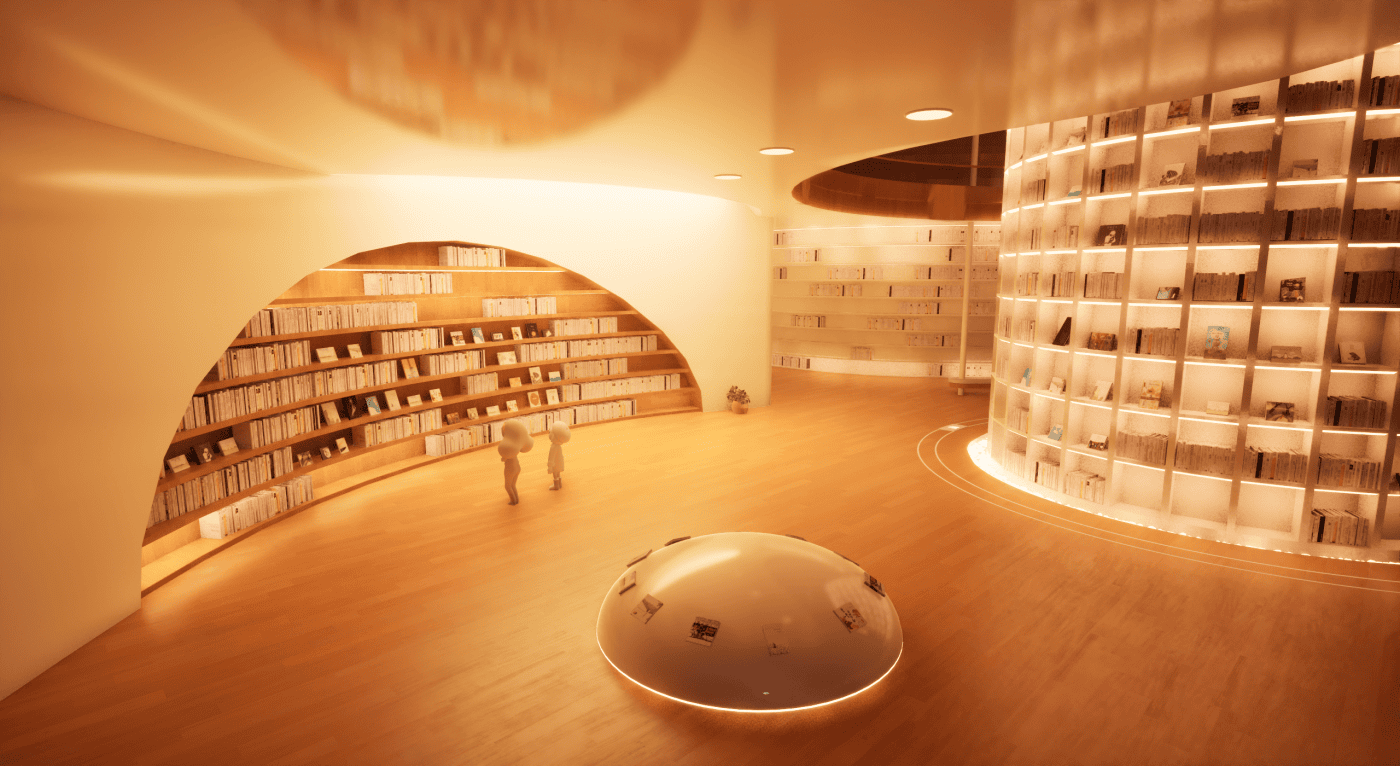
To progress through the adventure, players must complete core quests that are vital for advancing through each chapter of the game. However, side quests will also play a key role, offering players an opportunity to immerse themselves more deeply in the experience, while adding fun, dynamic, and interactive elements. What can players expect from the side quests in Wonder Library, especially in terms of their variety and uniqueness? Furthermore, how will these side quests affect the main narrative? Will they have a meaningful impact on the core quests, or will they remain entirely optional, with no effect on the primary storyline?
Mr. Bae: Main quests and side quests are a reflection of our design philosophy and ongoing considerations. We are well aware of the systems that conventional gamers are accustomed to, as well as the desire for novelty from new and experienced gamers alike. This balance will be reflected in the two types of quests, falling somewhere in between. Of course, this might invite both criticism and praise from players on either side.
While traditional quest formats follow familiar structures, the more creative quests are likely to be found among the side quests. However, even this distinction isn’t set in stone. We’ve designed the system so that main and side quests can influence each other. When approaching originality, we try to think beyond the conventional structures of games, but we constantly test ourselves, asking: “Will this be something players can immediately understand and connect with?”
The interaction between quests can vary—they may influence each other, or they may not. As mentioned earlier, our game seeks to reflect life itself, and our quests are designed with this in mind. While it’s not a sprawling game with infinite branching paths, we focus on incorporating elements akin to life: moments of chance, discovery, and, ultimately, meaningful choices.
The expansive library that the protagonist will inhabit and explore, serving as the central hub of Wonder Library, features a variety of distinctive spaces. From the cozy Picturebook Lounge and Interactive Book Corner to the immersive Magic Pages Room and Living Pages Corner, each area offers its own unique charm. Visitors can watch films in the Picturebook Theater, relax at the Picturebook Café, or spark creativity with children in the Children’s Play Studio. For those who enjoy auditory experiences, the Audiobook Room provides a gateway to captivating stories, all complemented by the friendly support of the Information Desk. How will these spaces be designed and organized within the game world, and what activities or interactions will players be able to experience in each of them?
Mr. Bae: Each of the spaces is designed to be enjoyed independently of the main storyline, allowing players to visit and explore them at any time. These spaces are also intended to provide moments for solitude and introspection. A vast space can feel lonely, but it also offers the freedom to exist without worrying about anyone else. Occasionally, this solitude is broken by activities or encounters with others, creating a delicate balance between isolation and interaction.
These expansive spaces are deliberately crafted to reflect the human desire to sometimes be alone in the world. At the same time, they convey that such solitude, while comforting, can also evoke a sense of loneliness. This duality is intentional, highlighting the increasing loneliness of our world and gradually reminding players of the importance of connection and communication.
Each space also holds secret discoveries—memories, regrets, or stories of those who have passed through before. These hidden elements add depth and meaning, encouraging players to uncover and reflect on the experiences left behind by others.

An intriguing element of the gameplay experience is the library management and customization feature, which allows players to organize and personalize their space to reflect their unique journey. How essential is this mechanic to the overall game design? What practical aspects will it encompass, how does it compare in significance to the other core features, and most importantly, what level of creative freedom will players have in customizing their spaces within the library?
Mr. Bae: In our current plan, this feature is limited to personal spaces and houses. The primary intention behind this is not to imply anything particularly unique but rather to offer a healing experience through the act of decorating one’s own space. It’s a place where players can design a cozy and comfortable environment that feels uniquely theirs. While this is a common feature in many games, it remains a definite source of healing.
The house is designed to fully convey the meaning of rest, incorporating elements like sleeping, cooking, and bathing. It even includes secluded corners that reflect feelings of melancholy. On the other hand, the library is a public space that cannot be customized by the player. However, it does include areas managed by the player, serving as significant shared spaces. These are places that symbolize paths many people have passed through, creating a sense of collective experience. We believe it’s important to separate the concepts of personal and shared spaces in this way.
Considering the distinct artistic identity of the game, are there particular cultural influences, either graphic or narrative, that have shaped the illustrated books in Wonder Library? How were these influences incorporated into the creative process?
Mr. Bae: While we select the picture books featured in Wonder Library, their contents belong entirely to the authors in the real world. Rather than us influencing these works, it’s the other way around—they influence us, shaping the meaning we create through the game. We see each picture book as its own world and as a fragment of the author’s life. These fragments are gathered and preserved within our library, where we act as messengers delivering them to the players, primarily through intentional quest processes.
In this sense, the library functions as a kind of lobby, connecting each unique world and offering players a pathway to explore them.
One of the most intriguing aspects we’ve noticed lies in the art design, which may not be immediately apparent but certainly stands out to a discerning eye: the contrasting color schemes for the characters and environments. On one side, we have a vibrant, almost freshly painted world, rich in saturated hues, while on the other, the characters—especially the protagonist—are depicted in stark white, monochromatic tones, as though they are yet to be “filled in” or colored. Is this just our interpretation, or is it a deliberate artistic decision? Will players themselves have the opportunity to bring these characters to life, gradually adding depth and personality as they “color” them, leaving a unique imprint on their journey?
Mr. Bae: Your interpretation is entirely correct. The characters are meant to gradually be “filled in” with color as part of their journey. This design choice avoids any biased interpretations, including those related to gender or age. It serves as a symbol of the tasks that must be accomplished within this world and reflects the idea of starting anew.
The contrast with the vibrant, fully realized picture books is intentional. Picture books represent the opposite—complete, rich, and filled with meaning. Technically, this contrast also helps highlight the picture books as unique works of art, making them stand out even more.
Before we reach the final question, there is one we feel is essential to ask, even though it may be somewhat anticipated: What can we expect from the OST? What kinds of soundscapes and thematic elements will the soundtrack explore to enrich and deepen this emotional, introspective journey of self-discovery?
Mr. Bae: The importance of music to us is comparable to that of visuals. While it’s a basic rule in games for sound effects to enhance the player’s mood during actions, we aim to go beyond this by allowing players to immerse themselves in natural ambient sounds at any moment. There will even come a point when these sounds fade entirely. This silence represents a moment of focus—a way to express deep emotional experiences through quiet concentration. It’s an example of how we guide attention differently from more visually extravagant games.
The second key element is “escalation.” As seen in the music chosen for our promotional video, the soundtrack evolves from the story’s beginning to its climax. Even subtle changes in sound effects reflect this journey, though players might not consciously notice. At times, the sound is designed to nudge players toward recognizing certain moments or intentions within the narrative.
It will be a delicate process, and we want to emphasize, once again, the crucial role of sound and music in enriching the emotional depth of the game.
The Kickstarter campaign for Wonder Library marked a pivotal moment, opening the door to exciting new opportunities for the project’s future. As we look ahead to 2025 and consider the roadmap you’ve shared, what can players look forward to from Wonder Library in the coming year? Where does the development process currently stand, and what key milestones or steps lie on the horizon?
Mr. Bae: As a small studio, we strive for innovation rather than familiarity, but that path is never without its challenges. Change, by its nature, is rarely easy. While the direction of this project is clear, carving out a path that hasn’t been traveled before is less about finding a definitive answer and more about seeking something close to one.
From a development perspective, we continue to face financial concerns, but we have no plans to stop. In fact, the slower development process allows ideas to mature, which is not entirely a bad thing. Given the nature of our project, there will be many opportunities for us to share progress along the way, so we hope you’ll look forward to those updates and provide us with plenty of feedback. Constructive criticism will help our project grow, even if it stings at times.
Ultimately, this project is destined to evolve into a new platform, emerging through a variety of processes. We believe that every challenge will shape Wonder Library into something even greater.
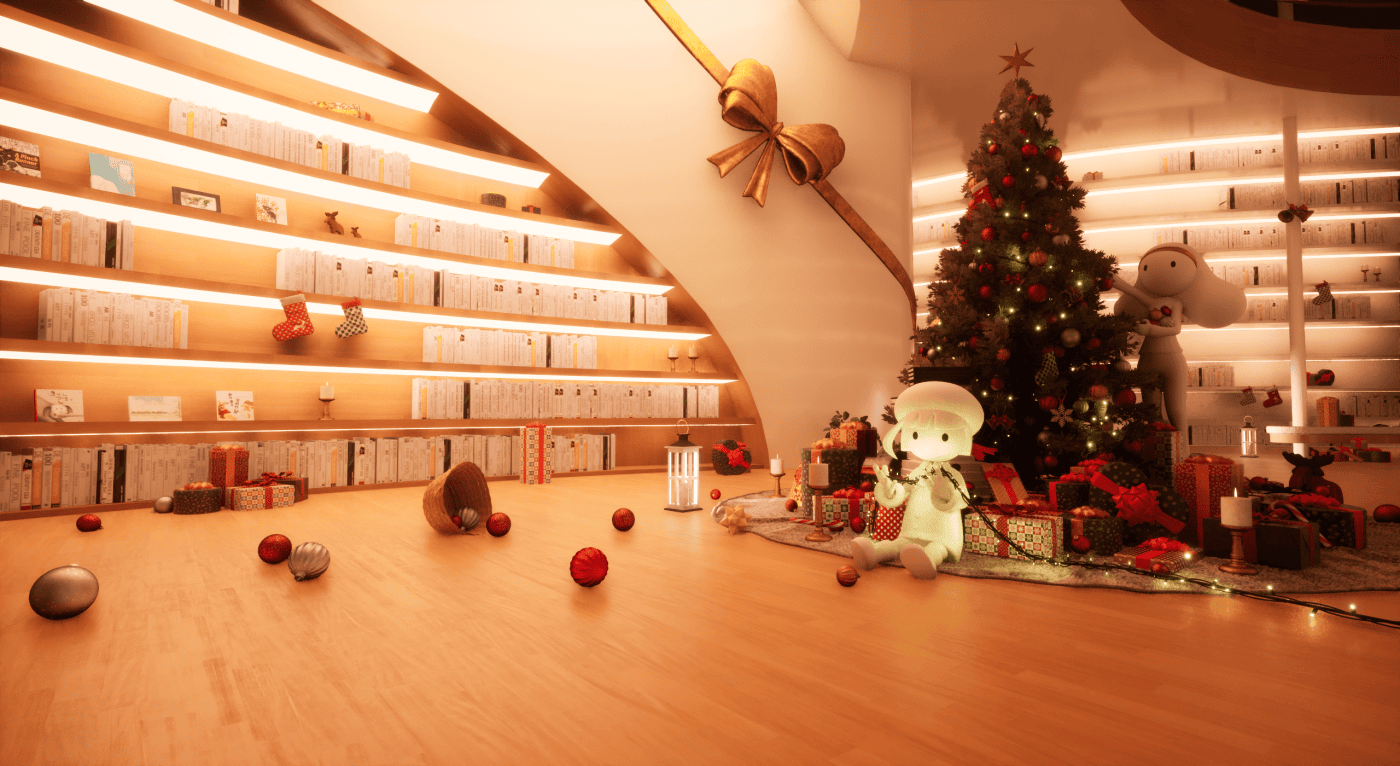
Its shelves whisper secrets and wonders — Wonder Library opens to visitors soon…
With Bae JeongHoon’s final words, our time together today sadly draws to a close. But before we part ways, allow us to extend our deepest thanks to you, our readers, for joining us on this journey into the world of Wonder Library. A heartfelt thank you also goes to the entire team at Areumdamda Media Lab—and in particular to Mr. Bae—for his time, insight, and the opportunity to delve deeper into their visionary project.
Our conversation may end here, but the story continues. Wonder Library is set to launch in the second half of 2025 on PC via Steam and Stove Indie, with plans to expand to other platforms, including PlayStation and Xbox.
Until then, stay tuned by visiting the official Areumdamda website, following their social media channels, and joining their Discord community for the latest updates and exclusive behind-the-scenes insights.
That’s all from us for now. See you in the next chapter.

